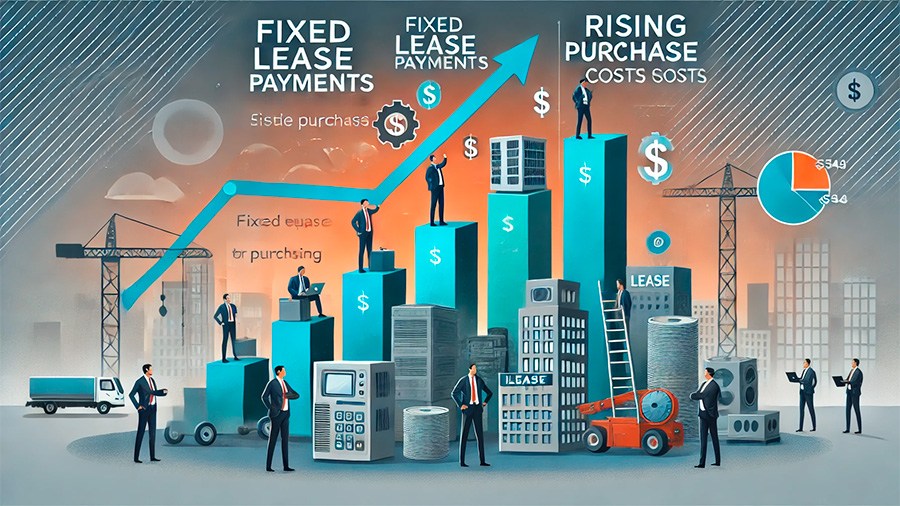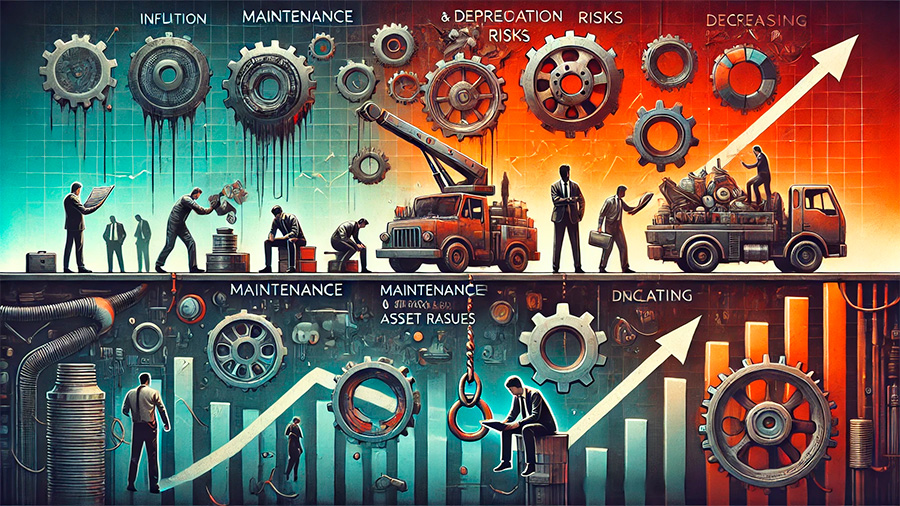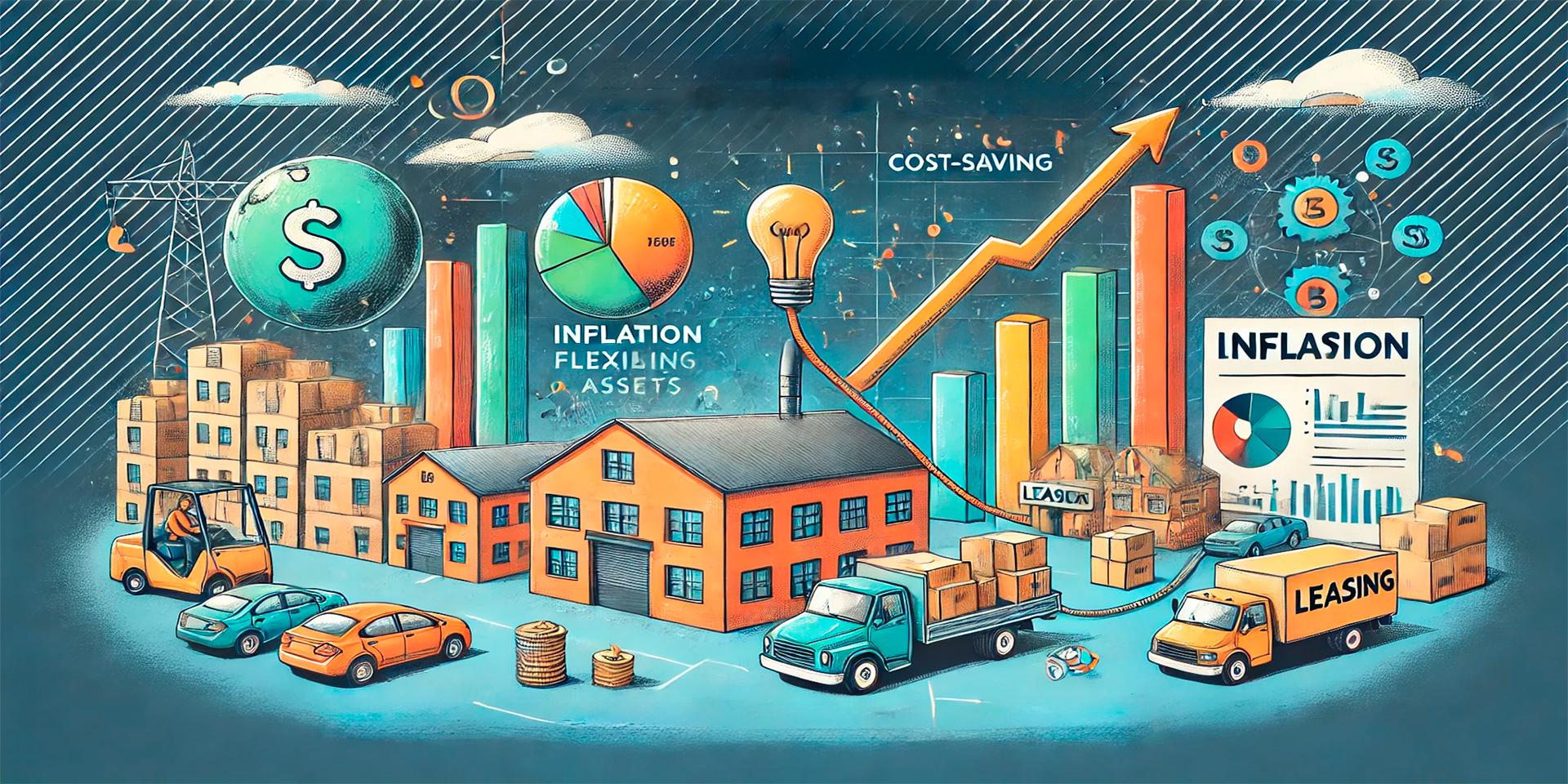Periods of inflation can have a significant impact on business expenses, changing the financial dynamics of leasing versus buying. As prices rise, businesses must carefully evaluate which option—leasing or buying—offers the most cost-effective solution for acquiring assets. Inflation affects not only the initial cost of purchasing equipment but also the ongoing costs associated with maintenance, repairs, and interest rates on loans.
In this article, we examine how inflation influences the decision between leasing and buying, and explore which option may be more cost-effective during times of high inflation.
Impact of Inflation on Purchasing Power
During inflationary periods, the purchasing power of money decreases, making it more expensive for businesses to buy assets outright. The cost of equipment, property, and technology can rise significantly, requiring businesses to spend more capital upfront to acquire essential tools. For businesses that need to preserve cash flow to manage rising operational costs, buying may not be the most practical option during inflation.
Leasing, by contrast, allows businesses to spread payments over time, reducing the need for large upfront investments. This preserves cash flow, which is particularly valuable during inflationary periods when businesses must allocate resources to manage increased expenses in other areas, such as labor, raw materials, or utilities. By avoiding large capital outlays, leasing provides more financial flexibility.

Fixed Lease Payments vs. Rising Purchase Costs
Leasing agreements typically offer fixed monthly payments, which can be a significant advantage during periods of inflation. Fixed lease payments allow businesses to predict and manage their expenses more effectively, insulating them from the immediate impact of rising costs. This predictability is especially beneficial when interest rates are volatile, as businesses can avoid the higher interest payments that come with inflation-driven loan rates.
On the other hand, when purchasing assets, businesses must contend with rising interest rates on loans or financing. Inflation often leads to higher borrowing costs, which can increase the overall expense of buying. In such cases, leasing provides a more stable financial solution, allowing businesses to avoid the risk of escalating loan payments.
Preserving Cash Flow for Inflation-Driven Expenses
One of the primary advantages of leasing during inflation is that it helps businesses preserve cash flow. In an inflationary environment, businesses face rising costs across the board, from wages to raw materials. Preserving cash flow becomes critical for meeting these day-to-day operational needs. Leasing helps businesses avoid large, one-time expenses associated with purchasing, freeing up capital to manage other inflation-driven expenses.
For example, a manufacturing company experiencing higher costs for raw materials may choose to lease production equipment rather than purchase it outright. This approach ensures the company has sufficient cash flow to cover increased material costs while still acquiring the necessary tools for production.

Maintenance and Depreciation Risks During Inflation
Inflation can also affect the cost of maintaining and repairing purchased assets. As inflation drives up the cost of labor and parts, businesses that own equipment may face higher-than-expected expenses for upkeep. These increased maintenance costs can significantly impact the long-term financial viability of buying assets during inflationary periods.
Leasing agreements, on the other hand, often include provisions for maintenance and repairs, shifting the responsibility to the lessor. This arrangement shields businesses from unexpected repair costs, making leasing a more predictable and cost-effective option when inflation leads to rising maintenance expenses. Additionally, because the lessor retains ownership of the leased asset, the business avoids the risk of depreciation, which can be exacerbated by inflation.
As asset values decline due to wear and tear, businesses that purchase equipment must account for the loss in value. Inflation can accelerate depreciation, further reducing the financial benefit of owning assets. Leasing eliminates this risk, as the business does not own the asset and therefore is not affected by its declining value over time.
Tax Advantages of Leasing During Inflation
Leasing can also provide tax advantages that are particularly beneficial during inflationary periods. Lease payments are often considered operating expenses, meaning they can be deducted from taxable income. This reduces a business’s tax liability and improves cash flow, providing additional financial relief during times when inflation is driving up other costs.
By contrast, when purchasing assets, businesses may only be able to deduct depreciation and interest, which may not provide the same immediate financial benefit. The ability to deduct lease payments in full can improve cash flow, making leasing a more financially advantageous option during inflation.
Flexibility to Adapt to Changing Economic Conditions
Leasing provides businesses with greater flexibility during periods of economic uncertainty. Inflation can cause rapid shifts in market conditions, requiring businesses to adapt quickly. Leasing allows businesses to return or upgrade equipment at the end of the lease term, providing the flexibility to adjust their operations as needed. This is particularly valuable during inflation when businesses may need to downsize or change their asset needs to cope with rising costs.
When purchasing assets, businesses are locked into long-term ownership, making it harder to adapt to changing market conditions. If inflation causes a downturn in demand or requires a shift in strategy, businesses that own their equipment may find themselves with costly, underutilized assets. Leasing allows businesses to stay agile and responsive to changing economic conditions without being burdened by the long-term commitment of ownership.
Conclusion
Leasing offers a cost-effective alternative to buying during inflationary periods, providing businesses with predictable payments, flexibility, and reduced maintenance risks. By preserving cash flow, minimizing exposure to rising interest rates, and avoiding depreciation, leasing helps businesses manage the financial challenges of inflation more effectively. For companies looking to maintain financial stability and adapt to changing market conditions, leasing is often the better option during times of high inflation.


